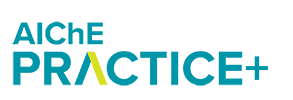
Engineering is a dynamic and exciting field of work that naturally involves work in chemistry, physics, mathematics, and other basic sciences. But engineering is more than just knowledge of mathematical relationships and chemical formulae. Engineering inherently involves problem solving, and problem solving is the seed of innovation that can, and often does, blossom into discovery and invention. This online course will provide the engineer with a basic understanding of the laws that surround the protection of ideas, discoveries, and inventions, including the intellectual property (IP) law principles that surround patents, copyrights, trademarks and trade secrets.
On September 16, 2011, the America Invents Act (AIA) was enacted, representing the first major overhaul of the U.S. Patent system in nearly 60 years. The AIA substantively changes many aspects of patent law, such as:
- a switch to a first-to-file system
- providing new types of prior art to invalidate patents
- providing many new ways to challenge patents, both pre and post-grant; and
- providing new defenses to patent infringement, among others
In keeping, "Intellectual Property for Chemical Engineers" has also been recently overhauled to provide the learner with the most up-to-date information regarding the new U.S. Patent laws. Students enrolling in this course will be exposed to numerous basic patent laws and corresponding strategy, both pre-AIA and post-AIA, as well as to other intellectual property laws and principles, such as trade secrets, copyrights and trademarks.
This course may be taken as part of the AIChE Credential for Sustainability Professionals (ACSP). More info
- Discuss the laws protecting patents, copyrights, trademarks, and trade secrets
- Identify situations in which IP protection may be beneficial to your business / situation
- Distinguish between a patent, a copyright, a trademark, and a trade secret
- Describe patent, copyright and trademark requirements and filing processes
- Describe trade secret requirements and implementation methods
- Explain the patenting process and describe what a patent does and what a patent doesn't do
- Describe how to avoid "losing" your IP (e.g., patents)
Unit One
- Module One: Introduction to Intellectual Property
- Module Two: Introduction to Patents
- Module Three: Patents & Utility
- Module Four: Patents & Novelty
- Module Five: Patents & Non-Obviousness
Unit Two
- Module Six: The Patenting Process – Part One
- Module Seven: The Patenting Process – Part Two
- Module Eight: Trade Secrets
- Module Nine: Copyrights
- Module Ten: Trademarks
Final Exam: 30 Questions
Find answers to questions about registration and refunds, tuition and fees, travel and lodging (for location-based courses), how eLearning courses work, how credits work, and more.


